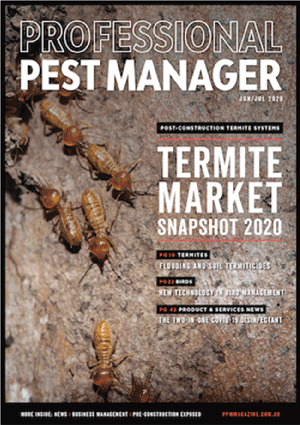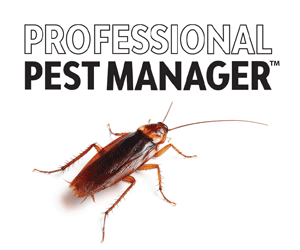The economic value of the pest control market extends beyond the revenue generated by pest control companies, according to a US article in Journal of Economic Entomology.
The value of pest control services to society is generally positioned around its importance in keeping people safe, both from nuisance pests and public health pests that carry disease, such as mosquitoes; protecting buildings from termites and other timber pests; and protecting stored food. From an economic point of view, the value of the pest control industry is normally reported in an estimated annual review at the service level. However, the economic benefit of pest control is more than just the revenue – there are other direct effects, such as the number of people employed, as well as the indirect effects, primarily on the suppliers to the pest control industry. The induced effects, primarily the effect of the spending, also needs consideration.
Although attempts to estimate the revenue and economic contribution of pest control at the regional, country and global levels are regularly carried out, the level of confidence in these estimates is variable. This is due to differences in assessment methodologies, variations in definitions, and the fact that private businesses are generally unwilling to share financial data. Many of these surveys can only be accessed by paying a significant fee and the sources of their data are often not fully declared.
Researchers in Georgia, USA have attempted to develop a reproducible model for the economic assessment of the professional pest management industry. Not surprisingly they used the state of Georgia to develop the modelling. They used two data sets to develop the modelling. The first data set was gathered from in-person surveys and employment data through an open records request, while the second data set was mined by accessing the publicly available data from the United States Census Bureau, Economic Census (1997-2017) and employment data from the Bureau of Labor Statistics’ Quarterly Census of Employment and Wages (QCEW). The IMPLAN software was used to process the data for the economic modelling of the contribution of the pest industry to the Georgia economy.
Although the modelling of the two data sets provided different numerical results, they were within 16% of each other and the general patterns were the same. The researchers believe that both forecasts were probably an underestimate of the market size, with the survey data providing a smaller estimated value than the estimate from public data, due to the smaller sample size of the survey. However, even the estimate of economic value from the public data was probably on the low side as it did not include data from sole operators. Table 1 shows the modelling data from the public data.
|
Employment |
Output (US$ millions) |
% of total Output |
|
|
Direct effects |
8,489 |
989 |
48% |
|
Indirect effects |
3,275 |
602 |
30% |
|
Induced effects |
2,544 |
449 |
22% |
|
Total |
14,308 |
2,039 |
Table 1: Output from IMPLAN modelling providing 2021 estimates using QCEW data
Direct effect: Pest control companies
Indirect effects: Supply chain supporting the pest industry
Induced effects: Employee spending
Both models showed that the economic benefit of the pest control industry was approximately double the revenue of the pest control industry. Having more accurate data on the size of the pest control market and its contributions to the overall economy not only allows better industry decisions to be made, but provides important information for discussions with governments and policy makers.
The authors illustrated the dangers in taking quoted figures at face value – it is very difficult to have confidence in figures if there is no understanding as to the source of the data and the methodology behind its collection and modelling. An example they provided were the market size estimates provided by the Georgia Pest Association in comparison with actual figures from the QCEW data (Table 2).
|
Data Source |
2012 |
2020 |
|
GPA documents (source unknown) |
US$ 321 million |
US$ 321 million |
|
QCEW |
US$ 579 million |
US$ 908 million |
Table 2: Georgia pest control market revenue data
A couple of other interesting pieces of actual data from QCEW on the Georgia pest control market.
Firstly, data from 1997-2017 demonstrated that the number of people employed in the Georgia pest management industry more than doubled over the 20-year period, with total revenue showing a similar increase. Secondly, that the average revenue per employee was calculated at US$116,482 (AU$176,461).
IBISWorld produces industry reports for the building pest control services industry in Australia. Its estimated market revenue forecast for 2024 is AU$1.7 billion. As a private market research firm, it does not divulge the details of its data sources, although the company states, “Each industry report incorporates data and research from government databases, industry-specific sources, industry contacts, and IBISWorld’s proprietary database of statistics and analysis to provide balanced, independent and accurate insights.”
Further reading: Forschler, et al. (2024). Estimate of the revenue and economic contribution of the professional pest management industry in Georgia, United States. Journal of Economic Entomology, 117 (2): 601–608. https://doi.org/10.1093/jee/toae029


